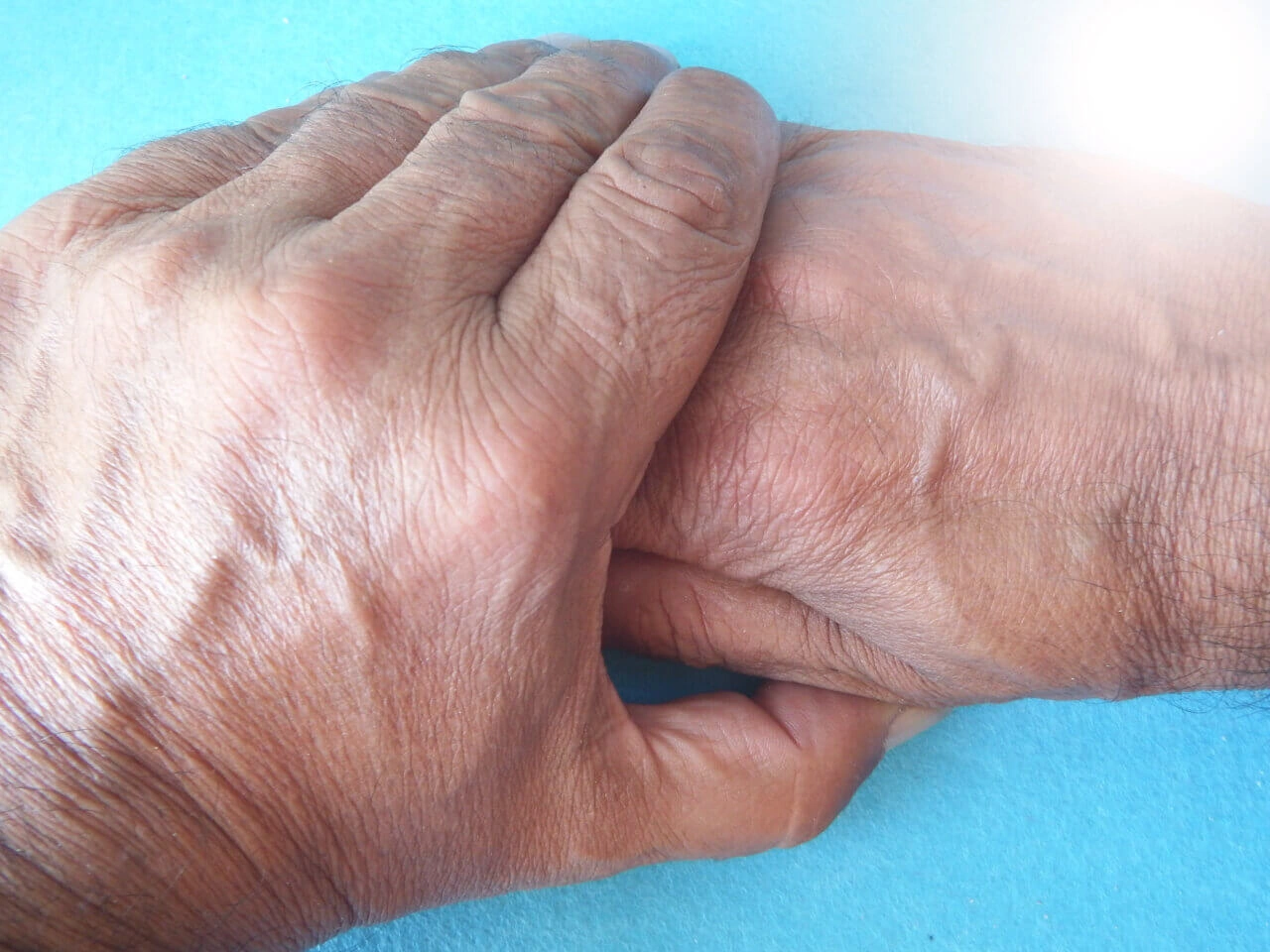Ever felt a tremor in your hand and wondered if it’s the “tremor of old age” or something more? You’re not alone. Many people experience the classic shuffling walk, stiffness, or slowed movements and instantly think of Parkinson’s disease, only to discover there are dozens of other conditions that can look just the same.
That’s why we’re diving straight into what a Parkinson‑like syndrome actually means, how to tell it apart from true Parkinson’s, and what you can do right now to get the right answers. Grab a cup of tea, settle in, and let’s untangle this together.
What Is It?
A Parkinson‑like syndrome (sometimes called parkinsonism or pseudoparkinsonism) is a blanket term for any disorder that shows the hallmark trio of bradykinesia (slowness of movement), rigidity (muscle stiffness), and tremor. The crucial point is that these symptoms can arise from many different roots – not just the loss of dopamine‑producing cells that defines classic Parkinson’s disease.
Key Clinical Triad
- Bradykinesia – moving feels like wading through syrup.
- Rigidity – muscles stay “tight” even when you’re at rest.
- Tremor – rhythmic shaking that may appear at rest or with action.
Quick Comparison
| Feature | Classic Parkinson’s | Parkinson‑like Syndrome (example) |
|---|---|---|
| Typical onset | Age > 60, gradual | Can be early, drug‑induced, or sudden |
| Tremor type | Resting, often unilateral | Action/essential tremor, bilateral |
| Levodopa response | Good | Variable or poor |
| Common mimics | – | Essential tremor, NPH, DLB, MSA, CBS |
Common Mimics
Imagine trying to spot a celebrity in a crowd – you might think you’ve found them, but a closer look shows it’s just a look‑alike. That’s what happens in medicine when we hear “parkinsonism.” Here are the most frequent doppelgängers.
Essential Tremor
Essential tremor (ET) is a shaking of the hands, head, or voice that worsens with activity. Unlike the resting tremor of Parkinson’s, ET shows up when you’re writing or holding a cup. Studies from the Parkinson Foundation note that people with ET have a slightly higher risk of later developing Parkinson’s, so keeping an eye on it matters.
Normal‑Pressure Hydrocephalus (NPH)
NPH is a buildup of cerebrospinal fluid that squeezes the brain without raising pressure. The classic “wet, wobbly, wacky” triad (urinary urgency, magnetic gait, and slowed thinking) can masquerade as Parkinson’s. A lumbar‑tap test often gives a clue – if walking improves after a small fluid removal, NPH could be the culprit.
Dementia with Lewy Bodies (DLB)
DLB blends movement trouble with early visual hallucinations, fluctuating alertness, and memory lapses. It shares the same protein clumps (alpha‑synuclein) that Parkinson’s patients have, but the cognitive changes surface almost at the same time as the motor symptoms, making diagnosis tricky.
Multiple System Atrophy (MSA)
MSA attacks both the motor system and the autonomic nerves. You might notice a blood‑pressure drop when standing, trouble with bladder control, or a clumsy gait that looks “cerebellar.” Levodopa usually helps only a little, if at all.
Corticobasal Syndrome (CBS)
CBS is the rebel of the group – it throws in asymmetric stiffness, strange limb posturing, and a speech stumbling that feels like trying to sing with a zipper in your mouth. That speech stumbling is known as progressive apraxia of speech, a red flag that points toward CBS rather than classic Parkinson’s.
Drug Triggers
Ever taken a medication and felt a sudden stiffness? Certain drugs can mimic Parkinson’s almost overnight. This is called drug‑induced parkinsonism, and the good news is that, in many cases, it’s reversible.
Usual Suspects
- Antipsychotics – especially high‑potency ones that block dopamine D₂ receptors.
- Anti‑emetics such as metoclopramide.
- Some antidepressants and calcium‑channel blockers.
How to Spot It
Think “Did this start after a new prescription?” If the symptoms appeared suddenly, are fairly symmetric, and improve when the drug is tapered, you’re probably looking at a medication side‑effect rather than a neurodegenerative disease.
Step‑by‑Step Management
- Review every medication you’re taking – ask your pharmacist to help.
- Work with your doctor to taper or switch the offending drug.
- If tremor persists, a short course of anticholinergics may help.
- Re‑evaluate after 4–6 weeks; most drug‑induced cases improve dramatically.
When the picture remains unclear, clinicians sometimes turn to advanced imaging. Neuroinflammation PET imaging can show whether there’s an underlying inflammatory process that’s driving the symptoms.
Biology Basics
Behind every symptom is a cascade of cellular events. Let’s peel back the curtain to see what’s really happening in the brain.
Brain Inflammation
Inflammation isn’t just a hot spot on the outside of the body – the brain can get inflamed too. Microglia, the brain’s immune cells, can go into overdrive, releasing chemicals that damage neurons. This brain inflammation is increasingly recognized as a driver of secondary parkinsonism, especially after infections or traumatic injury.
Neuroinflammation PET Imaging
Imagine a night‑vision camera that spots heat signatures in the brain. That’s what PET scans using TSPO tracers do – they highlight active microglia. Seeing a “hot” pattern can help differentiate an inflammatory mimic from a purely neurodegenerative one.
Tau Pathology vs. α‑Synuclein
Two proteins love to cause trouble in movement disorders. Tau pathology builds up in conditions like PSP and CBS, leading to stiff‑arm posturing and speech apraxia. In contrast, α‑synuclein aggregates dominate in Parkinson’s, DLB, and MSA. Knowing which protein is misfolded can guide treatment decisions and clinical trial eligibility.
Diagnosis Steps
Getting the right label isn’t about ticking boxes; it’s about stitching together clues from history, exam, labs, and imaging. Below is a roadmap you can share with your neurologist.
| Step | What to Do | Why It Matters |
|---|---|---|
| 1️⃣ History | Ask about symptom onset, medication use, family history, and gait changes. | Sets the differential. |
| 2️⃣ Exam | Check for asymmetry, limb apraxia, autonomic signs, and speech oddities. | Highlights “plus” features. |
| 3️⃣ Labs & MRI | Blood work for metabolic issues; MRI to spot NPH or structural lesions. | Rules out reversible causes. |
| 4️⃣ Da‑SCAN / FP‑CIT | Dopamine transporter scan. | Shows presynaptic loss typical of Parkinson’s but normal in many mimics. |
| 5️⃣ Advanced PET | Tau or TSPO PET if the picture remains cloudy. | Guides prognosis and trial enrollment. |
According to the Parkinson Foundation, a careful blend of these steps usually lands on the correct diagnosis within a few visits.
Managing Symptoms
Once the cause is nailed down, the next question is: “What can I do to feel better today?” Below is a balanced approach that weighs the upside of treatment against possible downsides.
Symptom‑Targeted Therapy
- Levodopa trial: If imaging shows dopamine loss, a short test dose can clarify responsiveness.
- Anticholinergics: Helpful for tremor‑dominant mimics, but watch for dry mouth and confusion.
- Physical & Speech Therapy: Especially critical for CBS where progressive apraxia of speech can be mitigated with specialized exercises.
Addressing the Underlying Cause
- Shunt surgery for NPH.
- Switch or taper offending drugs in drug‑induced cases.
- Targeted autonomic meds for MSA (e.g., midodrine for low blood pressure).
Risk / Benefit Checklist
| Benefit | Potential Risk |
|---|---|
| Improved mobility and independence | Medication side‑effects (nausea, dyskinesia) |
| Better sleep and mood | Unmasking cognitive decline in DLB |
| Slower disease progression (in trial settings) | Invasive procedures (shunt, DBS) carry surgical risks |
Remember, you’re the captain of your health ship. Ask your doctor what the expected gain is, and whether the possible side‑effects are worth it for you.
Real Stories
Stories stick better than facts. Here are three snapshots from folks who walked the diagnostic maze.
Case A – The Tremor That Wasn’t
Maria, 68, noticed a fine hand tremor while knitting. Her doctor initially labeled it early Parkinson’s, but a Da‑SCAN came back normal. A thorough medication review revealed she was on propranolol for migraines, a known tremor‑exacerbator. After switching meds, the tremor faded, and she returned to her knitting circles.
Case B – The Medication Mystery
James, 55, started a new antipsychotic for anxiety. Within weeks, he felt “frozen” – his legs wouldn’t move without effort. His neurologist recognized drug‑induced parkinsonism, tapered the drug, and introduced a short course of biperiden. Within a month, James was back to gardening, and his foot pain disappeared.
Case C – The Speech Puzzle
Lena, 72, woke up one morning unable to form words smoothly. Along with a stiff arm, she was scared of developing Parkinson’s. Imaging showed tau accumulation, pointing to corticobasal syndrome. Speech therapy focused on progressive apraxia of speech techniques, and while the disease progressed, Lena learned to communicate using a tablet, keeping her social life vibrant.
Takeaway
Parkinson‑like syndrome is a broad, sometimes bewildering family of disorders that share the same outward signs but often have very different origins. By paying close attention to the story your body tells – medication changes, gait quirks, speech shifts, and even how you feel after a lumbar tap – you and your clinician can zero in on the right diagnosis. Armed with that knowledge, treatment becomes a precise tool rather than a one‑size‑fits‑all.
So, if you’ve noticed any of these signs, don’t wait. Talk to a healthcare professional, bring a list of your meds, and ask about the diagnostic steps you’ve just read. And remember, you’re not alone on this journey – many have walked this path, found answers, and reclaimed their lives. If you have questions or experiences to share, feel free to reach out. We’re in this together.


















Leave a Reply
You must be logged in to post a comment.